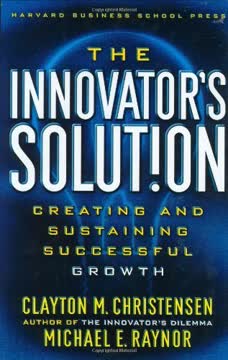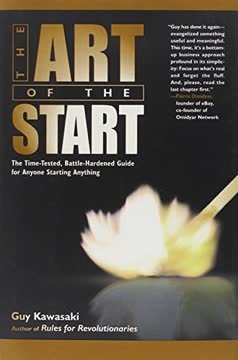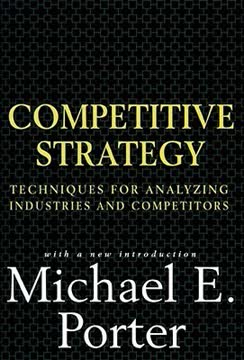가지 주요 요점
1. 아이디어를 비즈니스 모델로 분해하기
린 캔버스는 길고 지루한 비즈니스 계획을 20분 만에 작성할 수 있는 1페이지 비즈니스 모델로 대체합니다.
아이디어를 시각화하세요. 린 캔버스는 기업가들이 자신의 아이디어를 주요 가정으로 분해할 수 있도록 돕는 빠른 아이디어 캡처 도구입니다. 고객 세그먼트, 문제, 독특한 가치 제안, 솔루션, 채널, 수익 흐름, 비용 구조, 주요 지표, 불공정한 이점 등 비즈니스 모델의 모든 측면을 다루는 12개의 상자로 구성되어 있습니다.
단순화하고 집중하세요. 전통적인 비즈니스 계획은 작성하는 데 몇 주가 걸리고 거의 업데이트되지 않지만, 린 캔버스는 한 번에 빠르게 스케치할 수 있습니다. 이 과정은 기업가들이 비즈니스 모델을 본질로 압축하여 더 쉽게 소통하고 테스트할 수 있도록 합니다.
린 캔버스의 주요 구성 요소:
- 고객 세그먼트
- 문제
- 독특한 가치 제안
- 솔루션
- 채널
- 수익 흐름
- 비용 구조
- 주요 지표
- 불공정한 이점
2. 솔루션이 아닌 문제를 사랑하세요
해결할 가치가 있는 새로운 문제는 오래된 솔루션에서 나옵니다.
솔루션 편향을 피하세요. 기업가들은 종종 미리 생각해둔 솔루션을 정당화하기 위해 문제를 발명하는 함정에 빠집니다. 이러한 "혁신가의 편향"은 아무도 원하지 않는 제품을 만드는 결과를 초래할 수 있습니다. 대신, 솔루션으로 뛰어들기 전에 문제를 이해하고 사랑하는 데 집중하세요.
전환 트리거를 찾으세요. 성공적인 혁신은 사람들이 참아왔거나 우회해왔던 오래된 문제를 해결하는 경우가 많습니다. 기존 솔루션을 깨고 사람들이 새로운 솔루션으로 전환하게 만드는 "전환 트리거 이벤트"를 찾으세요. 이 접근 방식은 해결할 가치가 있는 실제 문제를 식별하고 고객이 실제로 원하는 제품을 만들 가능성을 높입니다.
성공적인 전환의 예:
- 카세트에서 CD로: 즉각적인 노래 접근
- CD에서 MP3 플레이어로: 개별 노래 구매
- MP3 플레이어에서 스트리밍으로: 수백만 곡에 접근
3. 목표는 견인력: 페르미 추정으로 타당성 테스트하기
견인력은 비즈니스 모델이 고객으로부터 수익을 창출하는 속도입니다.
성공 지표 정의하기. 최소 성공 기준(MSC)을 설정하여 프로젝트가 3년 내에 성공으로 간주될 수 있는 가장 작은 결과를 정의하세요. 이는 노력을 정렬하고 비즈니스 모델의 타당성을 테스트하기 위한 벤치마크를 제공합니다.
빠른 추정 사용하기. 복잡한 재무 예측을 만드는 대신, 페르미 추정을 사용하여 비즈니스 모델의 타당성을 빠르게 테스트하세요. 이 간단한 계산은 가격, 고객 생애 가치, 전환율과 같은 주요 가정을 기반으로 MSC를 달성할 가능성이 있는지 여부를 결정하는 데 도움이 됩니다.
페르미 추정의 주요 단계:
- 최소 성공 기준 설정 (예: 3년 내에 $10M ARR)
- 필요한 활성 고객 수 결정
- 최소 고객 획득률 계산
- 필요한 리드 수 추정
- 필요시 비즈니스 모델 조정
4. 가장 위험한 가정을 먼저 식별하고 테스트하기
어디로 가는지 모르면, 어떤 길이든 당신을 데려갈 것입니다.
위험 우선순위 정하기. 비즈니스 모델의 모든 가정이 동일한 중요성을 가지는 것은 아닙니다. 가장 위험한 가정을 식별하세요. 이러한 가정이 틀렸다면 비즈니스 모델 전체가 실패할 수 있습니다. 이는 종종 문제-솔루션 적합성, 가격 책정 또는 고객 획득과 관련이 있습니다.
체계적으로 테스트하기. 가장 위험한 가정을 식별한 후, 이를 테스트하기 위한 작고 빠른 실험을 설계하세요. 이 접근 방식은 상당한 시간과 자원을 투자하기 전에 비즈니스 모델의 주요 측면을 빠르게 검증하거나 무효화할 수 있게 합니다.
일반적인 위험 가정:
- 고객 문제의 존재와 긴급성
- 지불 의사
- 고객 획득 비용
- 전환율
- 고객 생애 가치
5. 투자자가 아닌 고객으로 시작하기
어떤 견인력이라도 입증할 수 있다면, 이는 당신을 돋보이게 합니다.
고객 검증에 집중하기. 투자자에게 피칭하는 것에 급급하지 말고, 잠재 고객과의 교류를 우선시하세요. 이 고객 중심 접근 방식은 문제-솔루션 적합성을 검증하고 초기 견인력을 생성하는 데 도움이 되며, 이는 잘 다듬어진 피치 덱보다 투자자에게 훨씬 더 가치가 있습니다.
고객 파이프라인 구축하기. 잠재 고객을 식별하고, 연락하고, 배우는 체계적인 프로세스를 개발하세요. 이는 제품을 개선하는 데 도움이 될 뿐만 아니라, 추천과 추천서를 제공할 수 있는 초기 채택자 기반을 만듭니다.
고객 발견 프로세스:
- 잠재 고객 식별
- 연락하고 인터뷰 일정 잡기
- 문제 발견 인터뷰 수행
- 솔루션 개념 제시 및 피드백 수집
- 학습에 기반한 반복
6. 고객 발견을 통해 최소 기능 제품(MVP) 정의하기
최소 기능 제품(MVP)은 고객 가치를 창출, 전달, 포착하는 가장 작은 솔루션입니다.
작고 집중적으로 시작하기. 전체 기능 제품을 구축하는 대신, 고객의 가장 시급한 문제를 해결하는 핵심 가치 제안을 식별하세요. 이는 더 빠르게 출시하고, 더 빨리 배우며, 실제 고객 피드백을 기반으로 반복할 수 있게 합니다.
구축 전에 검증하기. 고객 인터뷰와 저해상도 프로토타입을 사용하여 개발에 투자하기 전에 MVP 개념을 검증하세요. "데모-판매-구축" 접근 방식은 "구축-데모-판매"와 달리 고객이 실제로 원하고 지불할 의사가 있는 것을 구축하도록 보장합니다.
MVP 검증 단계:
- 핵심 가치 제안 정의
- 저해상도 프로토타입 또는 목업 생성
- 잠재 고객과 솔루션 인터뷰 수행
- 사전 주문 또는 의향서 수집
- 핵심 가치를 전달하는 데 필요한 것만 구축
7. 다양한 세계관을 이해하여 설득력 있는 피치 만들기
좋은 기업가 정신은 솔루션을 강제로 밀어붙이는 것이 아니라, 청중의 기존 세계관에 맞춰 비즈니스 모델 이야기를 구성하는 것입니다.
메시지를 맞춤화하세요. 투자자, 고객, 조언자 등 다양한 이해관계자는 각기 다른 세계관과 우선순위를 가지고 있습니다. 그들의 특정 관심사와 우려를 다루기 위해 피치를 맞춤화하세요. 일률적인 접근 방식을 사용하지 마세요.
가치와 결과에 집중하세요. 기능이나 기술에 집착하지 말고, 솔루션이 제공하는 가치와 목표 청중에게 가능하게 하는 결과를 강조하세요. 이는 더 설득력 있고 공감할 수 있는 이야기를 만들어 청중에게 더 잘 전달됩니다.
고려해야 할 주요 세계관:
- 투자자 세계관: 시장 규모, 수익화, 방어력
- 고객 세계관: 문제, 원하는 결과, 채택 용이성
- 조언자 세계관: 위험, 기회, 개인 경험
- 경쟁자 세계관: 차별화, 포지셔닝, 시장 역학
8. 영웅의 여정을 사용하여 매력적인 엘리베이터 피치 만들기
당신은 안내자 캐릭터입니다.
고객을 영웅으로 만드세요. 엘리베이터 피치에서 고객을 이야기의 영웅으로 위치시키고, 자신이나 제품이 아닌 고객의 여정과 변화를 중심으로 피치를 구성하세요. 이는 피치를 더 공감할 수 있고 매력적으로 만들어줍니다.
피치를 이야기처럼 구조화하세요. 고전적인 영웅의 여정 구조를 사용하여 엘리베이터 피치에 설득력 있는 내러티브 아크를 만드세요. 현재 상황(이전)을 설정하고, 트리거 이벤트를 소개하며, 문제를 해결하지 않으면 어떤 일이 벌어질지 강조하고, 솔루션을 영웅이 도전을 극복하도록 돕는 안내자나 마법의 선물로 위치시키세요.
영웅의 여정 엘리베이터 피치 요소:
- 영웅(고객)과 현재 상황 소개
- 트리거 이벤트 또는 도전 제시
- 문제가 해결되지 않으면 어떤 일이 벌어질지 강조
- 솔루션을 안내자나 마법의 선물로 위치시키기
- 변형된 미래 상태의 그림 그리기
마지막 업데이트 날짜:
FAQ
What's "Running Lean" about?
- Iterative Process: "Running Lean" by Ash Maurya is about iterating from an initial business idea (Plan A) to a plan that works by systematically testing and validating business models.
- Lean Canvas: The book introduces the Lean Canvas, a one-page business model that helps entrepreneurs deconstruct their ideas into key assumptions and test them.
- Mindset Shift: It emphasizes a shift from a build-first approach to a traction-first approach, focusing on customer problems rather than solutions.
- Continuous Innovation: The book outlines a framework for continuous innovation, helping entrepreneurs adapt and refine their business models in response to real-world feedback.
Why should I read "Running Lean"?
- Practical Guidance: The book offers practical, step-by-step guidance for entrepreneurs looking to validate and refine their business ideas.
- Avoid Common Pitfalls: It helps readers avoid common entrepreneurial pitfalls, such as building products that nobody wants or failing to secure stakeholder buy-in.
- Proven Framework: Ash Maurya provides a proven framework for systematically testing business models, which can increase the odds of success.
- Real-World Examples: The book includes real-world examples and case studies that illustrate the application of its principles.
What are the key takeaways of "Running Lean"?
- Business Model as Product: Treat your business model as a product that needs to be tested and validated, not just your solution.
- Focus on Traction: Traction is the ultimate goal, and it involves demonstrating that your business model works by achieving market adoption.
- Prioritize Risks: Identify and prioritize the riskiest assumptions in your business model and test them first.
- Iterative Learning: Use a cycle of modeling, prioritizing, and testing to continuously learn and adapt your business model.
What is the Lean Canvas, and how is it used in "Running Lean"?
- One-Page Business Model: The Lean Canvas is a one-page business model that helps entrepreneurs capture their ideas quickly and clearly.
- Key Assumptions: It breaks down a business idea into key assumptions, such as customer segments, problems, solutions, and revenue streams.
- Dynamic Model: Unlike traditional business plans, the Lean Canvas is a dynamic model that can be updated and refined as new information is gathered.
- Focus on Risks: It helps entrepreneurs focus on identifying and testing the riskiest parts of their business model first.
How does "Running Lean" define traction?
- Monetizable Value: Traction is defined as the rate at which a business model captures monetizable value from its customers.
- Evidence of Demand: It serves as evidence that there is demand for your product and that your business model is working.
- Investor Interest: Traction is crucial for attracting investors, as it demonstrates that your business has potential for growth and profitability.
- Customer Engagement: It involves customer engagement and adoption, indicating that your product is solving a real problem.
What is the "Innovator's Bias" mentioned in "Running Lean"?
- Solution-Centric Thinking: Innovator's Bias refers to the tendency of entrepreneurs to focus too much on their solution rather than the customer's problem.
- Inventing Problems: Entrepreneurs may unconsciously invent problems to justify their solution, rather than identifying real customer needs.
- Overcoming Bias: The book suggests overcoming this bias by focusing on customer problems and existing alternatives to uncover real problems worth solving.
- Innovator's Gift: The Innovator's Gift is the realization that new problems worth solving come from old solutions, guiding entrepreneurs to frame problems in terms of existing alternatives.
What is the "Traction-First Approach" in "Running Lean"?
- Focus on Market Adoption: The Traction-First Approach emphasizes achieving market adoption before building a complete product.
- Customer Validation: It involves validating customer demand and securing early adopters before investing heavily in product development.
- Avoiding the Build Trap: This approach helps avoid the build trap, where entrepreneurs spend too much time perfecting a product without validating demand.
- Iterative Development: It encourages iterative development, where entrepreneurs build, test, and refine their product based on customer feedback.
How does "Running Lean" suggest testing business model assumptions?
- Prioritize Risks: Identify the riskiest assumptions in your business model and prioritize testing them first.
- Small Experiments: Use small, fast experiments to test assumptions and gather evidence to support or refute them.
- Customer Interviews: Conduct customer interviews to validate assumptions about customer segments, problems, and solutions.
- Iterative Process: Continuously iterate on your business model based on the results of your tests and experiments.
What are the "Nine Mindsets" in "Running Lean"?
- Model Mindsets: Treat your business model as a product, love the problem not the solution, and focus on traction.
- Prioritize Mindsets: Take the right action at the right time, roll out in stages, and place many small bets.
- Test Mindsets: Make evidence-based decisions, prioritize discovery before validation, and recognize that breakthroughs require unexpected outcomes.
- Continuous Innovation: These mindsets support the continuous innovation framework, helping entrepreneurs adapt and refine their business models.
What is the "Minimum Viable Product" (MVP) according to "Running Lean"?
- Smallest Solution: An MVP is the smallest solution that creates, delivers, and captures customer value.
- Customer Validation: It is used to validate customer demand and gather feedback before building a complete product.
- Avoid Overbuilding: The MVP approach helps avoid overbuilding by focusing on delivering just enough value to test assumptions.
- Iterative Refinement: Entrepreneurs can iterate and refine their MVP based on customer feedback and learning.
How does "Running Lean" address the "Catch-22" of startups?
- Traction vs. Resources: The Catch-22 refers to the challenge of needing traction to secure resources, but needing resources to achieve traction.
- Traction-First Approach: The book suggests a traction-first approach, where entrepreneurs focus on achieving market adoption before seeking investment.
- Customer Engagement: By engaging customers early and validating demand, entrepreneurs can demonstrate traction and attract resources.
- Iterative Learning: Continuous learning and adaptation help entrepreneurs navigate the Catch-22 and build a sustainable business model.
What are the best quotes from "Running Lean" and what do they mean?
- "Your business model is the product." This quote emphasizes the importance of treating the business model as a product that needs to be tested and validated, not just the solution.
- "Love the problem, not your solution." It highlights the need to focus on customer problems rather than being attached to a specific solution.
- "Traction is the goal." This quote underscores the importance of achieving market adoption and demonstrating that the business model works.
- "Breakthrough requires unexpected outcomes." It suggests that innovation often comes from unexpected insights and learning, encouraging entrepreneurs to embrace uncertainty.
리뷰
Running Lean은 기업가들에게 실용적인 지침서로 찬사를 받고 있으며, 비즈니스 아이디어를 개발하고 테스트하는 단계별 지침을 제공합니다. 독자들은 고객 피드백, 린 방법론, 리스크 감소에 중점을 둔 점을 높이 평가합니다. 많은 사람들이 이 책을 스타트업 필독서로 여기며, 다른 린 비즈니스 책들과 상호 보완적이라고 생각합니다. 이 책은 빠른 반복, 최소 기능 제품(MVP) 개발, 체계적인 테스트에 중점을 두고 있어 기업가들에게 큰 공감을 얻고 있습니다. 일부 독자들은 특히 기술 스타트업에 유용하다고 생각하는 반면, 다른 사람들은 다양한 분야에 적용 가능하다고 봅니다. 몇몇 비판은 B2C 예시에 집중된 점과 다른 린 스타트업 문헌과의 중복 가능성을 언급합니다.
Similar Books














